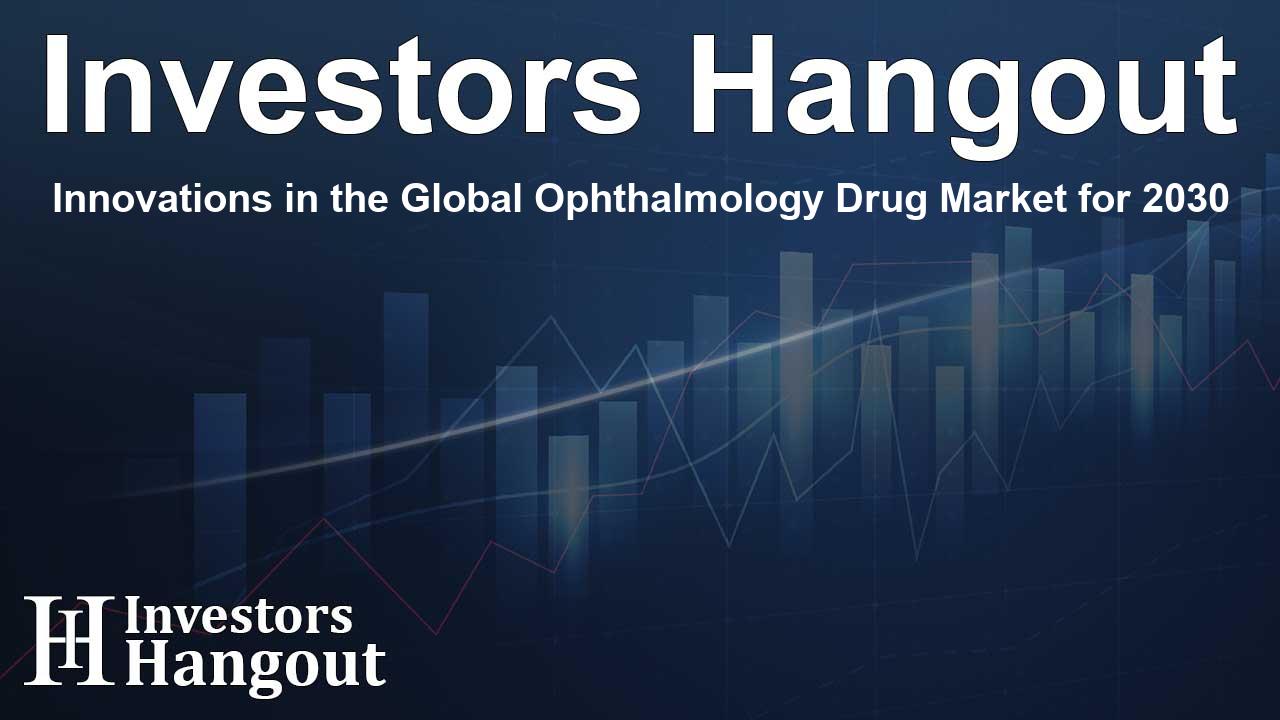Innovations in the Global Ophthalmology Drug Market for 2030

Exploring the Future of Ophthalmology Drug Market
The ophthalmology drugs market is on the verge of transformation, expected to grow significantly in the coming years. With a valuation forecasted to reach USD 26.28 billion by the end of the decade, this growth trajectory is influenced by demographic changes, technological advances, and industry initiatives that are addressing the escalating demand for effective vision care.
Demographic Changes Driving Demand
As populations continue to age globally, the prevalence of vision-related diseases like age-related macular degeneration (AMD) and glaucoma is increasing. These conditions have emerged as major concerns among older adults, notably AMD, which has become a leading cause of blindness. This rising occurrence is boosting demand for innovative treatments, particularly anti-VEGF therapies. Industry leaders are capitalizing on this trend by developing groundbreaking drugs such as Eylea and Lucentis, which offer innovative treatment protocols.
Understanding AMD and Its Impact
Aging populations are the primary driver behind increased demand for AMD therapies. With advancements in medical research and technology, understanding the hereditary risks associated with AMD has opened pathways for personalized treatment solutions. Market leaders are working relentlessly on therapies that provide improved outcomes with less invasive procedures.
Cost-Efficiency and Treatment Adherence Challenges
While innovation is key to elucidating new treatment methods, the market faces substantial hurdles, particularly concerning off-label drug use. Treatments such as bevacizumab are often preferred due to their lower costs compared to branded medications, despite strong clinical support for the latter. Furthermore, ensuring patient adherence to recommended therapies remains a challenge, especially in cases requiring frequent injections which could deter patients from maintaining their treatment regimens.
Emerging Strategies in Drug Development
Pharmaceutical companies are rising to the challenge by accelerating their development efforts toward next-generation therapies aimed at reducing treatment burdens. This includes innovative drug delivery systems and gene therapies that promise to halt disease progression with less frequent administration. Ongoing studies of hydrogels and sustained-release platforms are paving the way for treatments that are easier for patients to manage.
Noteworthy Developments in the Market
The competitive landscape is ever-evolving. Companies are strengthening their market positions through collaborations, biosimilar introductions, and innovative treatments. For instance, advancements made by companies like Bayer and BlueRock Therapeutics highlight the industry's commitment to enhancing treatment efficacy through various modalities.
Regional Insights and Market Segmentation
North America currently dominates the ophthalmology drugs market, supported by a robust healthcare framework and favorable reimbursement policies. These elements are crucial in facilitating early intervention strategies to combat vision-threatening diseases. Additionally, anti-VEGF therapies are shaping treatment practices across the region, contributing significantly to market growth.
Leading Players in the Market
Major industry players, including Regeneron Pharmaceuticals and Novartis, currently command a substantial share of the market. These companies leverage their resources toward product innovation and regulatory advantages, maintaining leadership roles while smaller players focus on niche markets and cost-effective solutions. As companies continue to pursue strategic collaborations and innovations, the landscape will evolve further.
Future Outlook and Importance
The upcoming years will undeniably be crucial for the ophthalmology drugs market. As the demand for innovative treatments continues to grow alongside advancing technologies, the sector’s competitive dynamics will shape the future of vision care. Industry stakeholders are called to bridge the gap between innovation and the economic realities of healthcare, shaping how care is delivered to patients everywhere.
Frequently Asked Questions
1. What is the projected market value of ophthalmology drugs by 2030?
The ophthalmology drugs market is projected to reach USD 26.28 billion by 2030.
2. What factors are driving the growth of the ophthalmology drug market?
The growth is driven by aging populations, increased prevalence of eye diseases, and advancements in drug therapies.
3. Which companies are leading the ophthalmology drug market?
Major players include Regeneron Pharmaceuticals, Novartis, Roche, and Bayer.
4. What challenges does the market face?
Challenges include off-label drug use, pricing issues, and patient treatment adherence.
5. What innovations are being pursued in ophthalmology treatments?
Companies are focusing on novel delivery systems, gene therapies, and less invasive treatment options.
About The Author
Contact Ryan Hughes privately here. Or send an email with ATTN: Ryan Hughes as the subject to contact@investorshangout.com.
About Investors Hangout
Investors Hangout is a leading online stock forum for financial discussion and learning, offering a wide range of free tools and resources. It draws in traders of all levels, who exchange market knowledge, investigate trading tactics, and keep an eye on industry developments in real time. Featuring financial articles, stock message boards, quotes, charts, company profiles, and live news updates. Through cooperative learning and a wealth of informational resources, it helps users from novices creating their first portfolios to experts honing their techniques. Join Investors Hangout today: https://investorshangout.com/
The content of this article is based on factual, publicly available information and does not represent legal, financial, or investment advice. Investors Hangout does not offer financial advice, and the author is not a licensed financial advisor. Consult a qualified advisor before making any financial or investment decisions based on this article. This article should not be considered advice to purchase, sell, or hold any securities or other investments. If any of the material provided here is inaccurate, please contact us for corrections.
